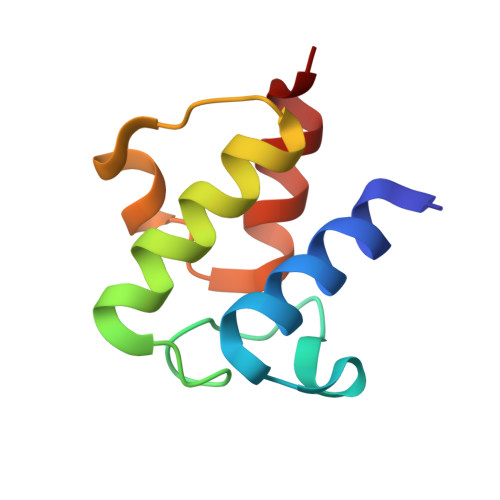Structural Studies of Fatty Acyl-(Acyl Carrier Protein) Thioesters Reveal a Hydrophobic Binding Cavity that Can Expand to Fit Longer Substrates.
Roujeinikova, A., Simon, W.J., Gilroy, J., Rice, D.W., Rafferty, J.B., Slabas, A.R.(2007) J Mol Biology 365: 135-145
- PubMed: 17059829
- DOI: https://doi.org/10.1016/j.jmb.2006.09.049
- Primary Citation of Related Structures:
2FAC, 2FAD, 2FAE - PubMed Abstract:
A knowledge of the structures of acyl chain loaded species of the acyl carrier protein (ACP) as used in fatty acid biosynthesis and a range of other metabolic events, is essential for a full understanding of the molecular recognition at the heart of these processes. To date the only crystal structure of an acylated species of ACP is that of a butyryl derivative of Escherichia coli ACP. We have now determined the structures of a family of acylated E. coli ACPs of varying acyl chain length. The acyl moiety is attached via a thioester bond to a phosphopantetheine linker that is in turn bound to a serine residue in ACP. The growing acyl chain can be accommodated within a central cavity in the ACP for transport during the elongation stages of lipid synthesis through changes in the conformation of a four alpha-helix bundle. The results not only clarify the means by which a substrate of varying size and complexity is transported in the cell but also suggest a mechanism by which interacting enzymes can recognize the loaded ACP through recognition of surface features including the conformation of the phosphopantetheine linker.
- Krebs Institute for Biomolecular Research, Department of Molecular Biology and Biotechnology, The University of Sheffield, Sheffield S10 2TN, UK.
Organizational Affiliation:


















